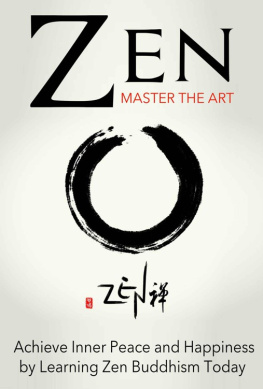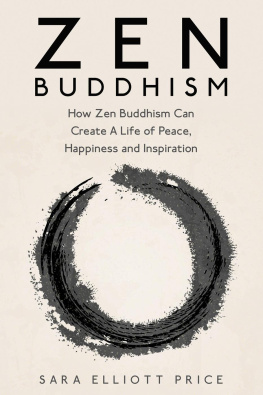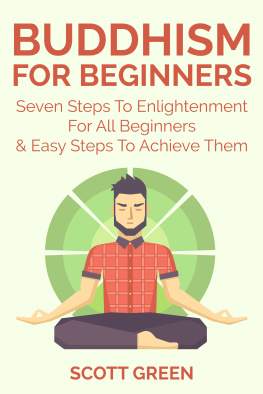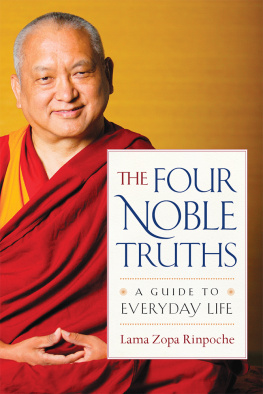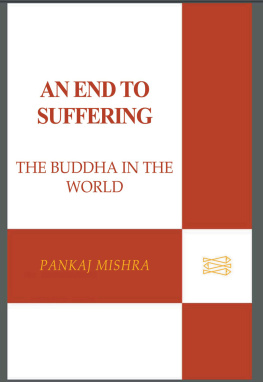Zen: Master the Art Achieve Inner Peace and Happiness by Learning Zen Buddhism Today
Sara Wilson
2014 Sara Wilson
Table of Contents
Introduction
I want to thank you and congratulate youfor downloading the book Zen: Master theArt: Achieve Inner Peace and Happiness by Learning Zen Buddhism Today.
This book contains proven steps andstrategies on how to become a truly content and enlightened individual throughthe practice of Zen Buddhism.
Heres an inescapable fact: you will need todetermine what you believe in this life. Humanity has struggled for millenniato define the meaning and purpose of existence. Religions have sprung up as aresult of this abiding curiosity and never-ending search for meaning. ZenBuddhism is one of those religions, and it can help you find enlightenmentwithin yourself and reach inner peace and contentment with the world.
If you do not develop your understanding ofZen Buddhism, you will struggle to ascribe meaning to life and to deal with thestresses and turmoil that accompany living. Meditation and other Zen practiceshelp you address these challenges and find peace and enlightenment.
Its time for you to become an amazing andenlightened Zen Buddhist!
Chapter 1: Basics of Zen
Core Beliefs
Zen is a school within Mahayana Buddhism, so to understand Zenyou first have to understand Buddhism on the whole.
Buddhism is a religion that began approximately 2,500 years agoin Asia, and has since spread worldwide. Currently, over 300 million peopleidentify as Buddhist.
Some describe Buddhism as a philosophy rather than a religion,as Buddhism doesnt focus on worshiping any particular deities, but instead exploresthe way an individual should live.
Buddhism addresses questions about the meaning of existence,prescribes a way of life, and through Buddhas Four Noble Truths and EightfoldPath (discussed in Chapters 2 and 3, respectively), explains the nature andcauses of suffering and how to achieve nirvana, a state of spiritual joy and enlightenment.
The Buddhist view of life is that life is both endless andimpermanent; everything is always changing. Every individual is reincarnated,or reborn after death into a new life. The goal of each life is to achieveenlightenment and reach the state of nirvana. Once you have reached nirvana,you no longer continue through the cycle of rebirth.
In addition to reincarnation, another well-known (althoughperhaps frequently misunderstood) Buddhist belief is karma. Karma is the ideathat your actions have consequences that affect you. What Westerners might callluck, for example, Buddhists might attribute to karma. Something seeminglyunlucky may be a result of something bad you did in a previous life, whereassomething good might result from previous good actions. However, its importantto remember that the goal of Buddhism is not to build up good karma for yournext life, but rather to escape the cycle of rebirth entirely by achievingnirvana.
These are the key ideas of Buddhism. Zen Buddhism focuses on anindividuals potential to become enlightened by looking within him- or herself,rather than by studying any external sources. Also central to Zen belief is theidea that meditation is one of the key practices that leads to enlightenment,as well as inner peace and happiness.
Zen comes from the Sanskrit word dhyana, meaning meditation. In Chinese, this word translates to Chan, pronounced Zen in Japan. This etymology indicates the centrality of meditationto Zen Buddhism, as well as the rich Asian history behind the belief system.
Zen Buddhism does not focus on any particular dogmas, insteadpositing that its what you do thatis important, rather than what you believe. Instead of studying scriptures ormemorizing rituals, Zen Buddhists seek enlightenment internally. Zen is alsooften passed on from a master to a disciple.
Zen avoids getting caught up in the quagmires of logicalthinking, believing instead that mankind ought to seek the peace andunderstanding that precedes thought. Logical thinking leads far too easily toconfusion and entanglement, and people are quick to rationalize nearlyanything. Instead, meditation and other techniques are used to develop controlover the mind and body.
Because each individual has the ability to find meaningindependently, Zen believes that everyone may become a Buddha, or enlightenedone.
History of Zen
The history of Zen Buddhism begins with the foundation ofBuddhism itself.
The founder of the Buddhist religion was Siddhartha Guatama,later called Buddha. Siddhartha was born a prince in modern-day Nepal, thoughit was then part of India, in 624 BC. Buddha spent the beginning of his life inthe royal palace, but everything changed when he embarked on a number ofchariot rides as a young man. He observed all the suffering in the world, andthe pain and death he saw contrasted sharply with the pleasures of his royallife.
Seeking understanding and spiritual truth, Buddha left thepalace and retreated to live independently in the forest. After six years ofexploring many different paths and beliefs, Buddha sat down to meditate under afig tree, now called the Bodhi Tree. It was there that Buddha achievedenlightenment, also called nirvana.
After this revelation, Buddha began to teach others in order tohelp them, too, find lasting peace and nirvana. His teachings can be summarizedby the Four Noble Truths and the Eightfold Path, which are discussed inChapters 2 and 3.
Many of Buddhas teachings were ambiguous, and he refused toappoint any official successor. As a result, many splits occurred in Buddhism inthe years following Siddharthas death. During the first century CE, a majorsplit led to the formation of the Mahayana and Hinayana branches.
Zen Buddhism is a school within the Mahayana branch. Zen beganin China during the 6th century, when the Indian Buddhist monkBodhidharmas teachings were influenced by the Chinese philosophy Taoism.
During the following centuries, Zen Buddhism traveled to Japan,where it continued to develop. Zen grew immensely popular in Japan, and it hada significant impact on Japanese culture, influencing art, literature, andpolitics.
As Zen continued to expand and develop, a number of sects or traditionsformed within the school. Rinzai Buddhism, Soto Buddhism, and Sanbo KayodanBuddhism are all traditions within Zen that emphasize different aspects orpractices of the religion.
While Zen Buddhism in all of its forms has flourished in Asiafor centuries, it didnt experience much success in the West until after WorldWar II. During that time, increasing knowledge about Eastern culture andhistory as well as the progressive and revolutionary counterculture movementsencouraged many Westerners to embrace Zen philosophies and practices. Sincethen, people worldwide have utilized Zen ideas and traditions to find innerpeace and spiritual enlightenment.
Chapter 2: The Four Noble Truths
The core of Buddhas teachings can be summed up in the FourNoble Truths. These are four statements about dukkha, or suffering, and werefeatured in Buddhas very first sermon after he achieved enlightenment underthe Bodhi Tree.
The Four Noble Truths are:
- The truth of suffering (Dukkha).
- The truth of the origin of suffering (Samudya).
- The truth of the cessation of suffering (Nirodha).
- The truth of the path to the cessation of suffering (Magga).
The First Noble Truth
The truth of suffering is that life is full of suffering in allits different forms. Suffering is often divided into three categories: thesuffering that occurs regularly throughout life (as in birth, illness, aging,and death), the suffering that comes from the impermanence and constant changeof life, and the suffering that results from unmet expectations aboutexistence.

